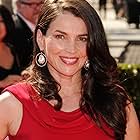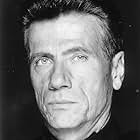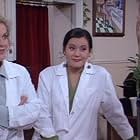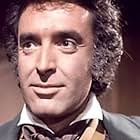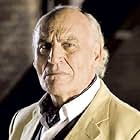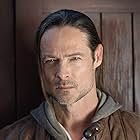16th century ruler King Philip II of Spain maneuvers within a court of deceit and betrayal.16th century ruler King Philip II of Spain maneuvers within a court of deceit and betrayal.16th century ruler King Philip II of Spain maneuvers within a court of deceit and betrayal.
- Awards
- 2 wins & 5 nominations
Storyline
Did you know
- TriviaThe interior and garden scenes at the Palace-Monastery of El Escorial were actually shot at the real historical site in the foothills of the Guadarrama Mountains outside Madrid.
- ConnectionsReferences Conan the Barbarian (1982)
Featured review
The 'conjuration' in the title refers to a real event: the political assassination in Madrid of a high-ranking official in the Spanish court in 1578. A plaque marks the spot today in the exact corner of the street where it happened.
The script begins with the scene of the murder and then takes us back to recount the events leading up to it. There are many characters involved, and although at the beginning it is not clear why we are being introduced to so many, eventually they all find a reason for being there, from a priest who ends up a the centre of the investigation, to a young 'morisca', a half-Moorish girl who is plucked from the streets to serve in a rich house.
The film is not very imaginatively shot and some of the expository dialogue is quite clumsy: some actors seem to be there just to summarise in words what the atmosphere at the time was, which is always a pitfall in historical films. Many actors means many lines of dialogue and this film -not short, about two hours and a quarter long- is full of conversations, often stilted and stagy. There's a lot of standing upright with broody brows with the purpose of looking imposing and serious, in bunches around the king or other important characters. It is not a slow film, however, but it's not a swashbuckler either. In fact, the one time when we are given a good old sword-fight, it goes so lamely clichéd, with stalls of fruit and ceramic bowls being turned upside down in a street market and a couple of unrealistic fight moves, that it feels utterly wrong.
In its favour, the costumes are great and many scenes are shot at El Escorial itself, the palace-cum-monastery where king Phillip II pored over the business of governing the world's leading superpower. Some of the actors are quite good in their roles, and this despite a cast mixing Spanish and foreign stars. I would single out for praise Julia Ormond, who looks not a day younger than her 43 years old. With her ageing beauty, she brings alive one of the most fascinating characters of her time, the eyepatch-wearing princess of Eboli. Joaquim de Almeida is also very good as the vigorous secretary Juan de Escobedo, acting his scenes with much-needed energy. It is a pity, though, that the role of Jason Isaacs, Antonio Pérez, fizzles out somewhat towards the end, when he should be one of the most memorable characters, according to the real story. Juanjo Puigcorbé plays a more ironic and even affable Phillip than the sombre and adust quasi-monk we have seen in other portrayals. And I personally took a liking to Jürgen Prochnow's character, a local 'alguacil' (sheriff) who becomes involved in the matter both through his job and his private life.
The question at the heart of the film is: did King Phillip II order the dismissal of one of his own officials? This has been much debated by historians, and the evidence is not conclusive. It may have been in his favour because of political rivalries, but the public backlash would have been uncomfortable (as it in fact was), even for a monarch as self-assured and with so great a grip on power as he happened to be. This matter is one of the central charges against him laid out by the so-called 'Leyenda negra' (Black legend), with which other European rulers and political enemies sought to discredit him in public, in particular in the Netherlands and Britain. Whether the film takes a stance on it or not, you will have to see it.
The script begins with the scene of the murder and then takes us back to recount the events leading up to it. There are many characters involved, and although at the beginning it is not clear why we are being introduced to so many, eventually they all find a reason for being there, from a priest who ends up a the centre of the investigation, to a young 'morisca', a half-Moorish girl who is plucked from the streets to serve in a rich house.
The film is not very imaginatively shot and some of the expository dialogue is quite clumsy: some actors seem to be there just to summarise in words what the atmosphere at the time was, which is always a pitfall in historical films. Many actors means many lines of dialogue and this film -not short, about two hours and a quarter long- is full of conversations, often stilted and stagy. There's a lot of standing upright with broody brows with the purpose of looking imposing and serious, in bunches around the king or other important characters. It is not a slow film, however, but it's not a swashbuckler either. In fact, the one time when we are given a good old sword-fight, it goes so lamely clichéd, with stalls of fruit and ceramic bowls being turned upside down in a street market and a couple of unrealistic fight moves, that it feels utterly wrong.
In its favour, the costumes are great and many scenes are shot at El Escorial itself, the palace-cum-monastery where king Phillip II pored over the business of governing the world's leading superpower. Some of the actors are quite good in their roles, and this despite a cast mixing Spanish and foreign stars. I would single out for praise Julia Ormond, who looks not a day younger than her 43 years old. With her ageing beauty, she brings alive one of the most fascinating characters of her time, the eyepatch-wearing princess of Eboli. Joaquim de Almeida is also very good as the vigorous secretary Juan de Escobedo, acting his scenes with much-needed energy. It is a pity, though, that the role of Jason Isaacs, Antonio Pérez, fizzles out somewhat towards the end, when he should be one of the most memorable characters, according to the real story. Juanjo Puigcorbé plays a more ironic and even affable Phillip than the sombre and adust quasi-monk we have seen in other portrayals. And I personally took a liking to Jürgen Prochnow's character, a local 'alguacil' (sheriff) who becomes involved in the matter both through his job and his private life.
The question at the heart of the film is: did King Phillip II order the dismissal of one of his own officials? This has been much debated by historians, and the evidence is not conclusive. It may have been in his favour because of political rivalries, but the public backlash would have been uncomfortable (as it in fact was), even for a monarch as self-assured and with so great a grip on power as he happened to be. This matter is one of the central charges against him laid out by the so-called 'Leyenda negra' (Black legend), with which other European rulers and political enemies sought to discredit him in public, in particular in the Netherlands and Britain. Whether the film takes a stance on it or not, you will have to see it.
- rogornmoradan
- Sep 7, 2008
- Permalink
Details
- Release date
- Country of origin
- Official site
- Languages
- Also known as
- La conjura de El Escorial
- Filming locations
- Production companies
- See more company credits at IMDbPro
Box office
- Budget
- €15,000,000 (estimated)
- Gross worldwide
- $2,784,297
- Runtime2 hours 8 minutes
- Color
- Aspect ratio
- 1.85 : 1
Contribute to this page
Suggest an edit or add missing content










